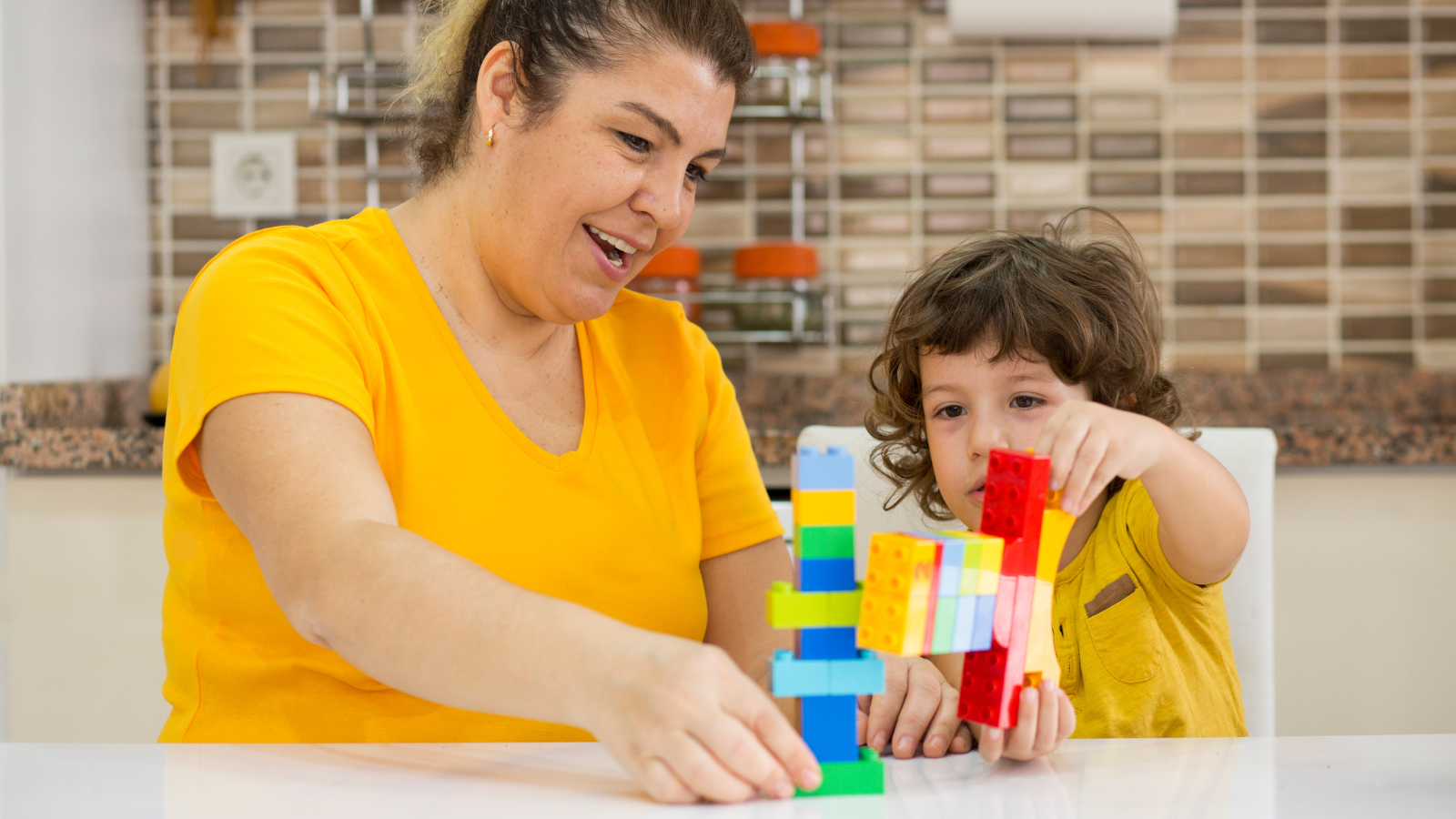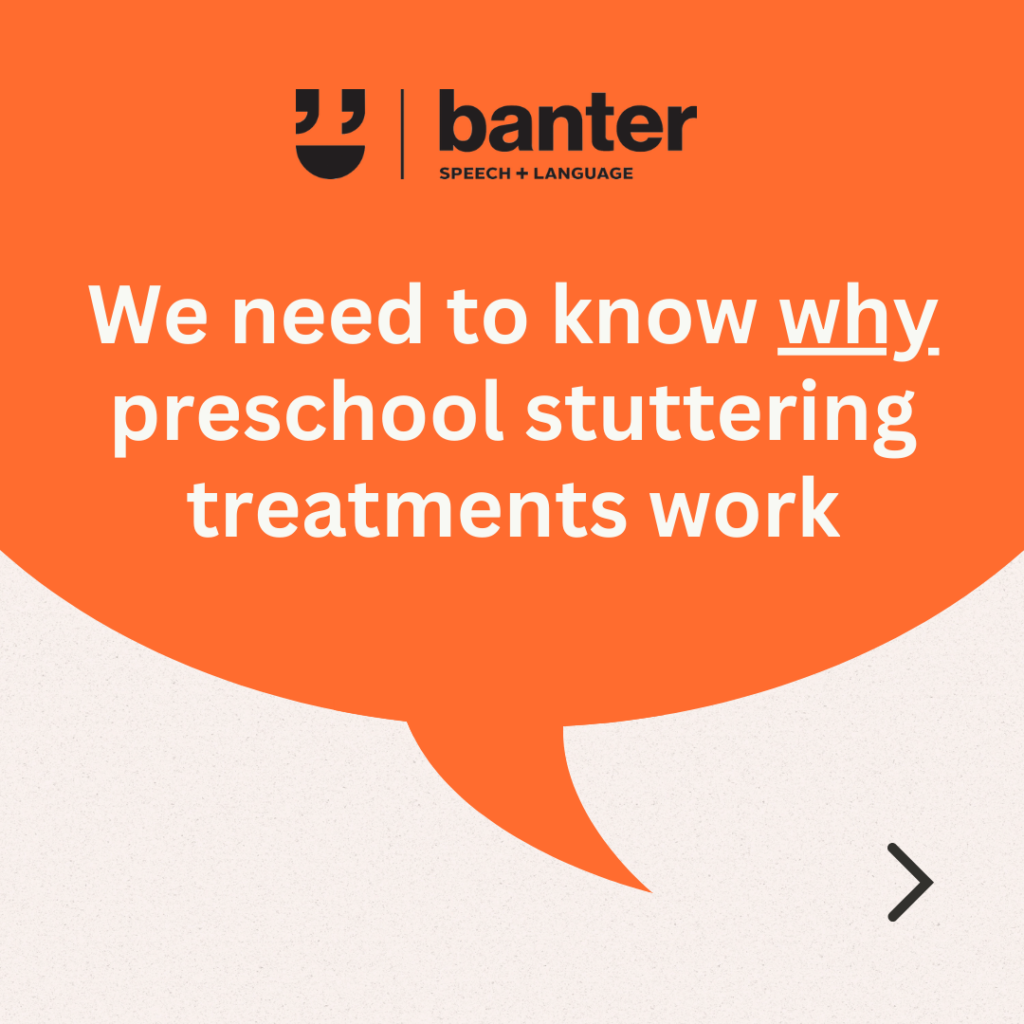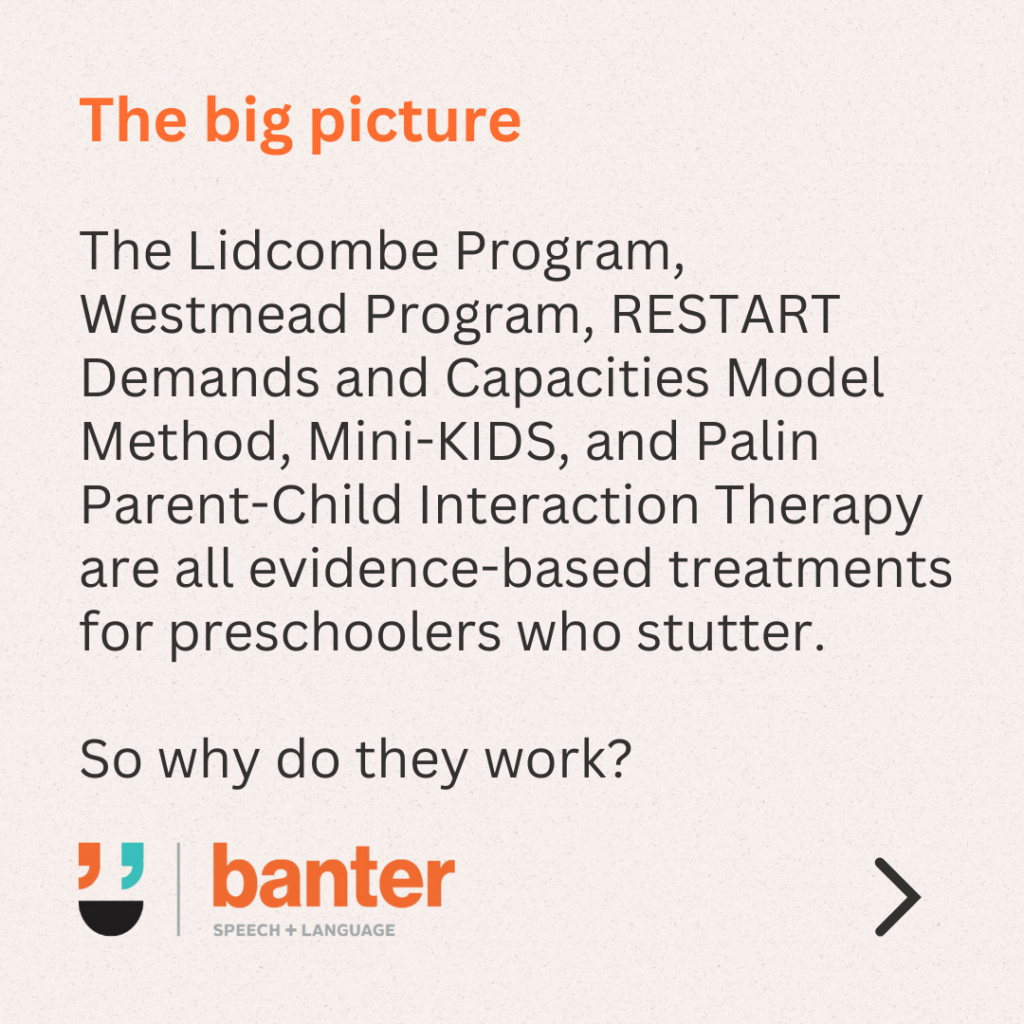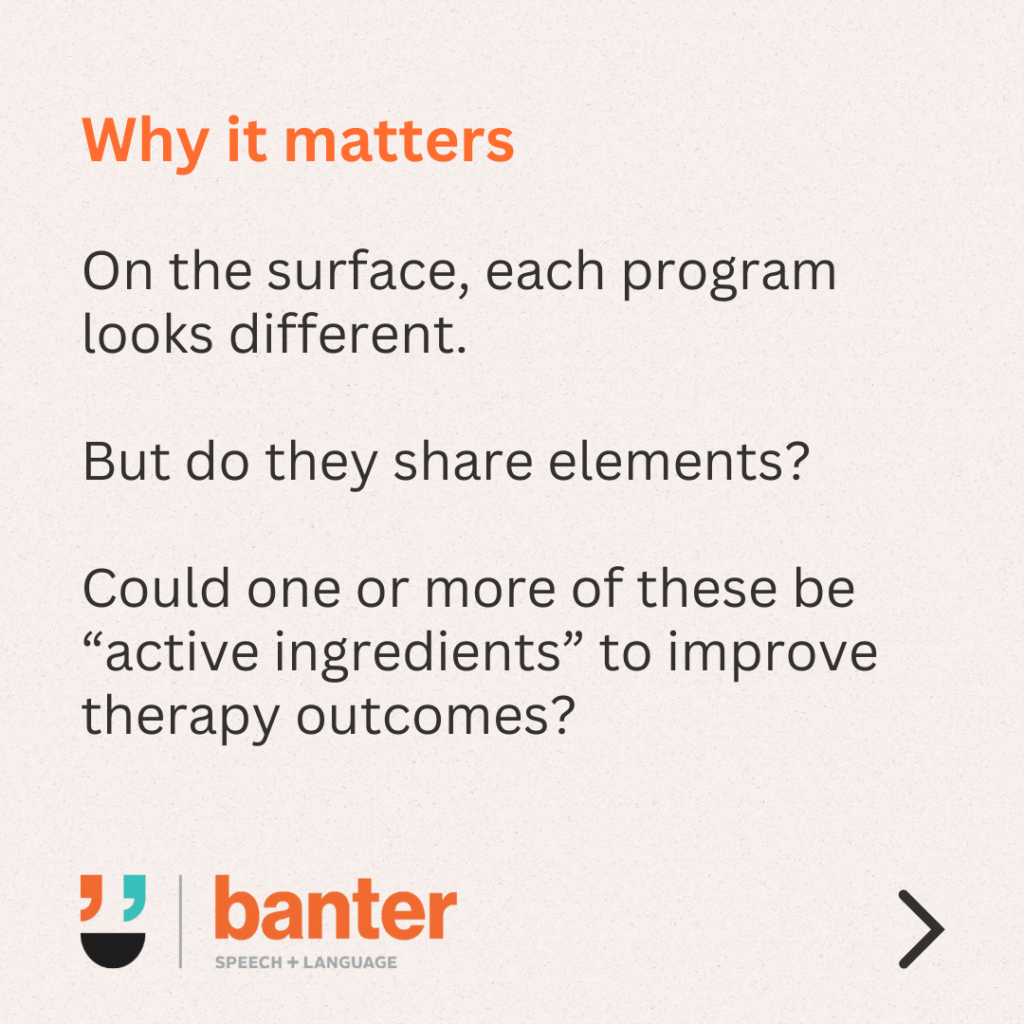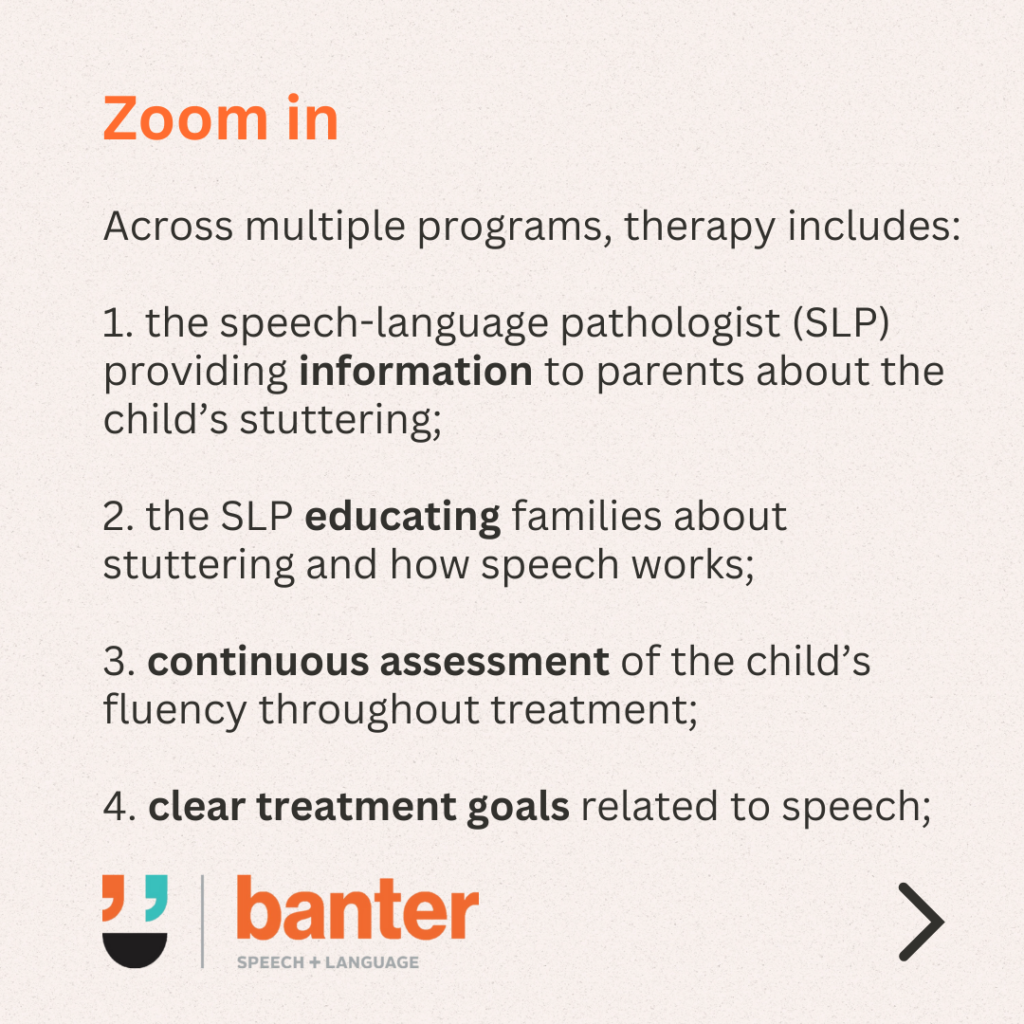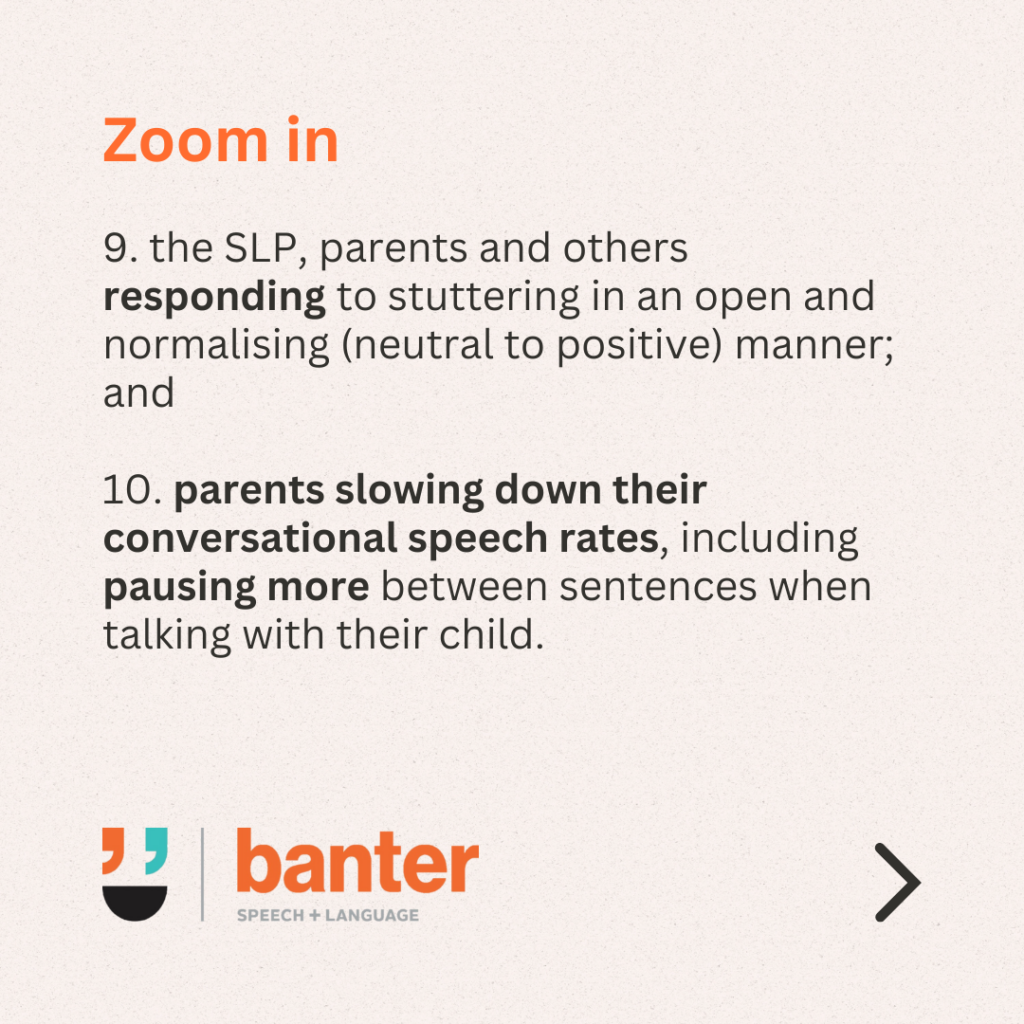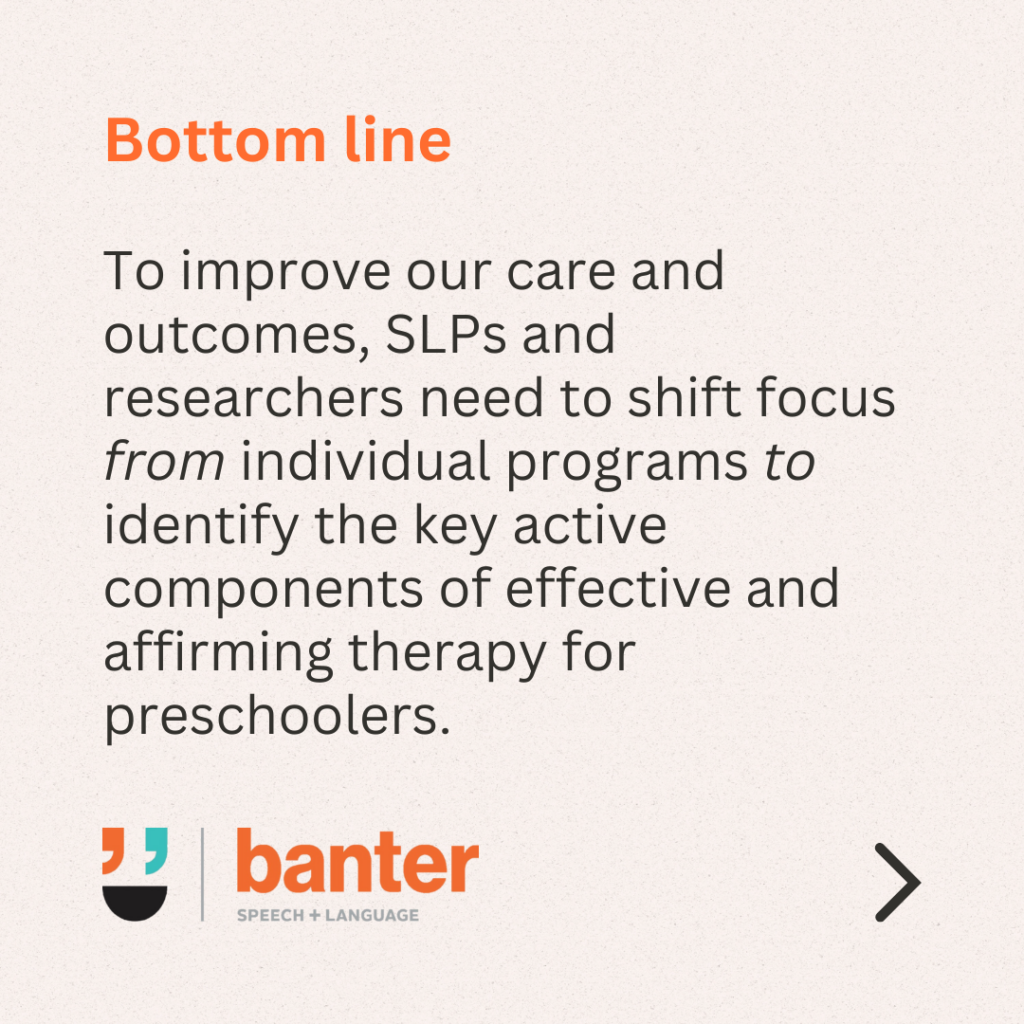We need to know why preschool stuttering treatments work
The big picture:
The Lidcombe Program, Westmead Program, RESTART Demands and Capacities Model Method, Mini-KIDS, and Palin Parent-Child Interaction Therapy are all evidence-based treatments for preschoolers who stutter.
So why do they work?
Why it matters:
On the surface, each program looks different. But do they share elements? Could one or more of these be “active ingredients” to improve therapy outcomes?
Zoom in:
Across multiple programs, therapy includes:
- the speech-language pathologist (SLP) providing information to parents about the child’s stuttering;
- the SLP educating families about stuttering and how speech works;
- continuous assessment of the child’s fluency throughout treatment;
- clear treatment goals related to speech;
- a high-level of parent involvement in the treatment;
- increased one-to-one child-parent interactions, with a focus on speech;
- a positive working relationship between parents, the treating SLP and/or the child;
- the SLP teaching problem-solving skills to parents and individualising the program for each child;
- the SLP, parents and others responding to stuttering in an open and normalising (neutral to positive) manner; and
- parents slowing down their conversational speech rates, including pausing more between sentences when talking with their child.
Front-line tips:
Clinical SLPs know we also need to:
- listen more to what families and children want/expect from therapy;
- review services to respond to families’ cost and time constraints;
- provide practical supports for managing everyday life (daily routines, sleep habits, emotions, and life changes);
- connect children and families with peer support and research networks;
- tackle social and environmental barriers to acceptance; and
- work harder to de-stigmatise stuttering by adopting affirming practices.
Bottom line:
To improve our care and outcomes, SLPs and researchers need to shift focus from individual programs to identify the key active components of effective and affirming therapy for preschoolers.
Go deeper:
Sjøstrand, Å., Næss, K-A. B., Melle, A. H., Hoff, K., Hansen, E. H., & Guttormsen, L. S. (2024). Treatment for Stuttering in Preschool-Age Children: A Qualitative Document Analysis of Treatment Programs. Journal of Speech, Language, and Hearing Research, 67(4), 1020–1041. (Open Access)
Related reads:
Stuttering: will my child recover? Factors that predict recovery and why you shouldn’t wait
My child stutters. Is it because he’s shy? sensitive? hyper?
Stuttering: what do we mean by “recovery”?
The Lidcombe Program for children who stutter
The Lidcombe Program for stuttering: my 10 favourite therapy activities
The Westmead Program for children who stutter
School-age stuttering research update: mixing and matching treatments to get results
Stuttering therapy: going beyond medical models.

Hi there, I’m David Kinnane.
Principal Speech Pathologist, Banter Speech & Language
Our talented team of certified practising speech pathologists provide unhurried, personalised and evidence-based speech pathology care to children and adults in the Inner West of Sydney and beyond, both in our clinic and via telehealth.

